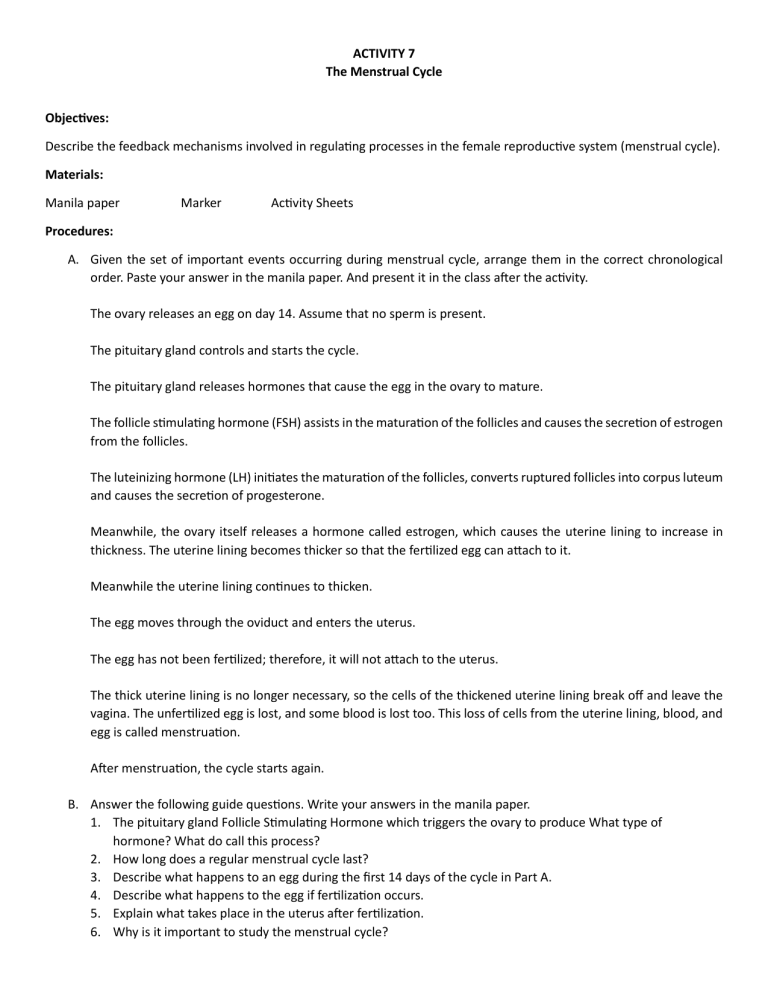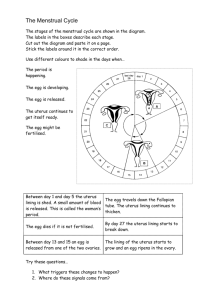
ACTIVITY 7 The Menstrual Cycle Objectives: Describe the feedback mechanisms involved in regulating processes in the female reproductive system (menstrual cycle). Materials: Manila paper Marker Activity Sheets Procedures: A. Given the set of important events occurring during menstrual cycle, arrange them in the correct chronological order. Paste your answer in the manila paper. And present it in the class after the activity. The ovary releases an egg on day 14. Assume that no sperm is present. The pituitary gland controls and starts the cycle. The pituitary gland releases hormones that cause the egg in the ovary to mature. The follicle stimulating hormone (FSH) assists in the maturation of the follicles and causes the secretion of estrogen from the follicles. The luteinizing hormone (LH) initiates the maturation of the follicles, converts ruptured follicles into corpus luteum and causes the secretion of progesterone. Meanwhile, the ovary itself releases a hormone called estrogen, which causes the uterine lining to increase in thickness. The uterine lining becomes thicker so that the fertilized egg can attach to it. Meanwhile the uterine lining continues to thicken. The egg moves through the oviduct and enters the uterus. The egg has not been fertilized; therefore, it will not attach to the uterus. The thick uterine lining is no longer necessary, so the cells of the thickened uterine lining break off and leave the vagina. The unfertilized egg is lost, and some blood is lost too. This loss of cells from the uterine lining, blood, and egg is called menstruation. After menstruation, the cycle starts again. B. Answer the following guide questions. Write your answers in the manila paper. 1. The pituitary gland Follicle Stimulating Hormone which triggers the ovary to produce What type of hormone? What do call this process? 2. How long does a regular menstrual cycle last? 3. Describe what happens to an egg during the first 14 days of the cycle in Part A. 4. Describe what happens to the egg if fertilization occurs. 5. Explain what takes place in the uterus after fertilization. 6. Why is it important to study the menstrual cycle?




